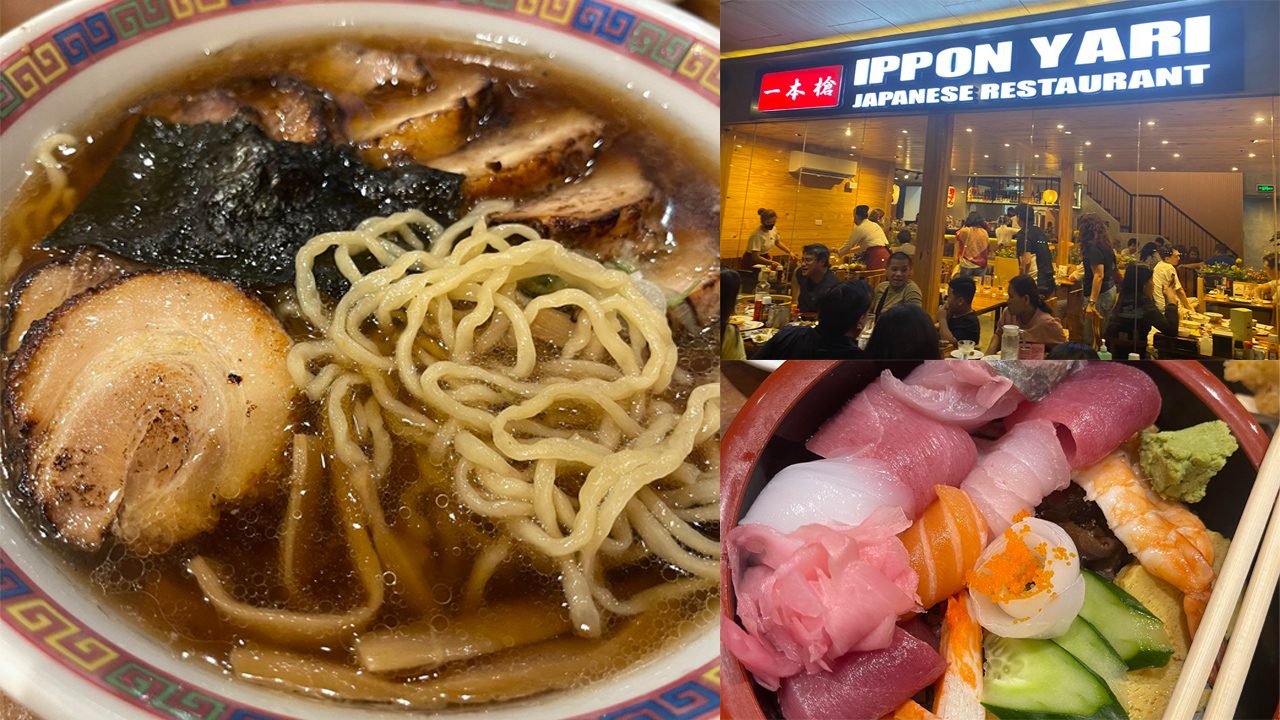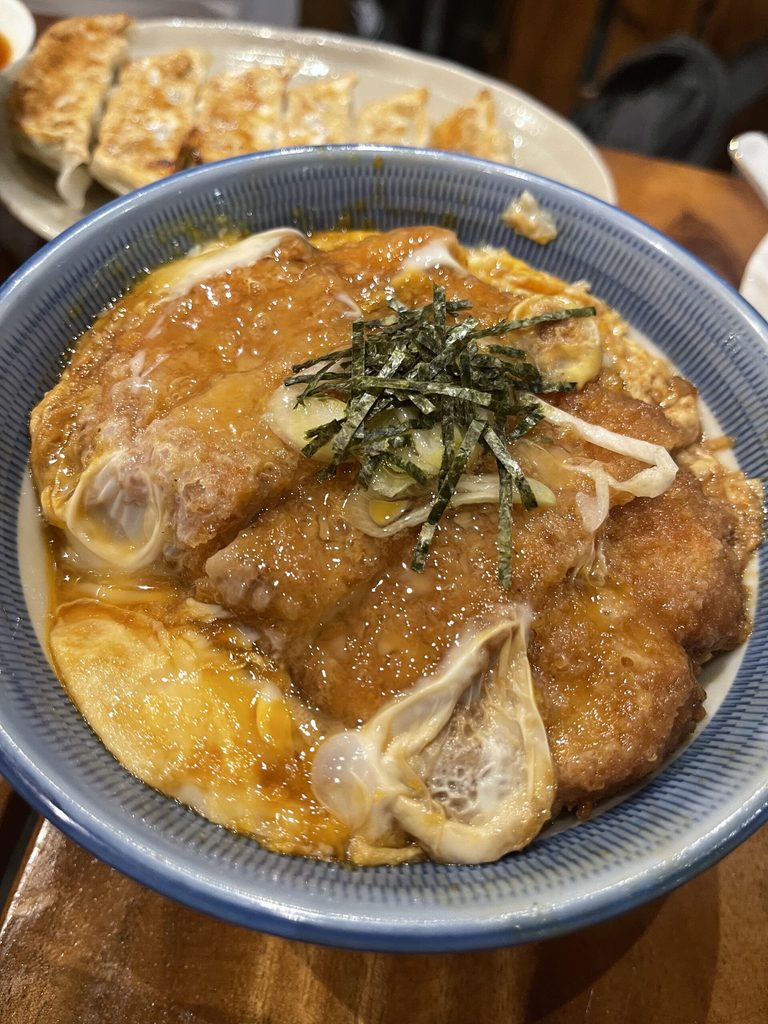SUMMARY
This is AI generated summarization, which may have errors. For context, always refer to the full article.

MANILA, Philippines – The word “authentic” is thrown around a lot when it comes to Japanese restaurants, but if the place is owned by a Japanese couple and patronized daily by Japanese businessmen, then I think it’s safe to say it’s the real deal.
Ipponyari, located on the second level of Alabang West Parade along Daang Hari, Almanza Dos, Las Piñas City, is one of the best Japanese restaurants I’ve visited recently. As someone all the way from the north, this location is not one I would drive to regularly, but since I was in the area last Sunday, I thought I might as well pay a visit. Thankfully, the trip was worth it!
Ipponyari is owned and managed by a Japanese husband-and-wife tandem, their son, and their son’s Filipina wife. Given this, expect “everyday Japanese” dining here – just like having a meal in a local Japanese kitchen.

According to the owners, the brand is targeted towards Japanese tourists and businessmen residing in the area looking for a taste of home and comfort. These customers really just want something familiar and dependable; nothing is “elevated,” refined, modern, sophisticated, or “fusion” here. It’s comfort food done right – crave-able, reliable, and incredibly affordable as well.
A ‘Japanese canteen’ in the country
Ipponyari started when the family patriarch moved to the Philippines and was desperately looking for a place to enjoy authentic Japanese food. He decided to take “a leap of faith” and started his own restaurant with his wife in 1996, which was Ipponyari’s first-ever branch along Arnaiz Avenue, Makati City. Then, the demand from the Japanese community living in the South grew, so the couple focused on expanding to provincial industrial parks where a lot of them resided.

“When our single-page menu of only 10 items began to expand, the Japanese started following us. We built relationships with them over time and became their daily commissary. With them in mind, we made sure to preserve the high standards of authentic Japanese cuisine for their everyday consumption,” the owners told Rappler. If their toughest critics were the Japanese, they knew they had pretty big shoes to fill.
The husband-and-wife tandem developed the menu, while the wife separately handled operations and management. In 1998, Ipponyari opened a second branch in Sta. Rosa, Laguna, followed by a third in Dasmarinas, Cavite in 2001. In 2002, the original Ipponyari in Arnaiz closed down.
Seven years later, Ipponyari opened another branch in Lipa, Batangas, followed by a fourth in Calamba, Laguna in 2012. In 2013, the couple’s son and their daughter-in-law stepped in to help the family business, and opened Ipponyari’s newest branch in Alabang in 2022. Now, Ipponyari houses over 300 regular items and over 500 seasonal items on the menu!
“We have so many items on our menu because the Japanese literally eat here every day, lunch and dinner, five days a week. We have become their canteen,” the owners said. The Japanese way of business has also inspired Ipponyari’s “disciplined approach” in sourcing ingredients, standardizing recipes, pricing items, and reflecting hospitality in their service.

“We serve what the Japanese eat in their homeland: whether they’re at home, dining out, or celebrating a special occasion. Like in Japan, we made sure that authenticity does not have to come at a high cost,” they added. Considering the serving sizes and quality, almost every menu item is sold at an accessible cost, even to the Filipino market. Almost everything is below P500; hardly anything goes beyond P600.
No frills needed

You know it’s a good and trustworthy Japanese restaurant when majority of the dine-in customers are Japanese. I visited on a Sunday night and it was probably the only restaurant in Alabang West Parade teeming with Filipino families and Japanese groups of friends waiting in line for a table. The zen-inspired restaurant has two levels and an outside area (every table was full), with a traditional agari seating area on the floor inside, solo ramen tables, group tables, private areas, and a sushi bar as well.

It does feel like you’ve been somewhat transported to an everyday Japanese canteen when you enter. The light wooden interiors, minimalist elements, native decor, warm lighting, and casual ambiance…here, there’s no need for frills. People just come in to enjoy good ‘ol everyday Japanese food in an inviting, family-friendly, clean space.

The menu is multiple pages long, complete with true-to-form photos of the food and Japanese translations. They serve almost everything you’d expect from a traditional Japanese resto – curry, ramen, agemono, noodles, tempura, donburi, maki, sashimi, okonomiyaki, chahan, yakiniku, takoyaki, and more – so it was pretty hard to decide what to order. The conclusion? One visit to Ipponyari was not enough. There’s something for everyone here, and every dish I tried was recommendable.

Among Ipponyari’s best-sellers is the Shoyu Ramen (P310), Japan’s classic soy-sauce based ramen that’s light, almost clear, and with just the right amount of umami. It’s served with soft and tender chashu, chewy noodles, and nori sheets. It’s a simple and straight-to-the-point bowl of ramen, so if you don’t like rich, heavy, and complex ramen broths, this is for you!

The refreshingly cold Zaru Soba (P280) was a nice contrast to the hot ramen – this noodle dish is as authentic as they come, served with traditional cold dipping sauce, spring onions, and wasabi on the side. Pair that with six pieces of Gyoza (P180), a value-for-money, busog-worthy side dish that could easily be a main with chahan. The slightly browned and crisp dumplings were filled to the brim with moist pork filling that hardly needed dipping sauce; it was that flavorful.


For a donburi (rice bowl) option, the best-selling Katsudon (P355) will easily fill you up. Slices of golden-brown, deep-fried, breaded pork cutlet is covered in sweet-savory katsudon sauce and scrambled egg, served atop moist Japanese rice. The pork cutlet was still noticeably crisp with every bite, which was impressive, since most become soft and damp after being soaked in the sauce.

For something light, the six-piece Ebi Tempura (P385) doesn’t fail. It’s legit tempura – made with real, juicy prawns and no fake meat or extenders – deep-fried in tempura batter until crisp and airy, perfect with steamed rice.

For my fellow sushi lovers, don’t skip on the best-selling Spicy Tuna Maki (P400). Each moist Japanese rice roll is covered in fish roe and topped with a generous amount of spicy tuna salad – fresh tuna mixed with togarashi powder and a spicy-slightly sweet Japanese mayo sauce, topped with crunchy tempura flakes for texture.

For your sashimi fix, the Chirashi Sushi is set at an affordable price of P470 for a sushi rice bowl with the freshest catch from the sea – tuna, tamago, shrimp, squid, salmon, mackerel, mushroom, crabstick, and more. Nothing tasted malansa nor malitid. If you want fresh sashimi without the rice, order the best-selling Assorted Sashimi Moriwase (P460) – it won’t disappoint.

If you’re willing to splurge just a tad, don’t sleep on the imported Hamachi Sashimi (P545), air-flown from Japan. I enjoyed every thick, fatty slice of this melt-in-your-mouth, clean, and buttery premium fish that didn’t taste “fishy” at all. It was a luxurious sashimi order that still fit into the budget.

The best cap-off to a hearty Japanese meal? Homemade mochi ice cream! Handmade by the daughter-in-law, her small business specializes in perfectly chewy, cool, and sweet mochi ice cream in different flavors; I loved the green tea and vanilla especially. For only P70 a piece, I would’ve tried all the flavors (there’s always a next time).

Verdict? Nothing else needs to be said – it’s just really good, authentic, high-quality Japanese comfort food here at Ipponyari that’s worth coming back for (and worth the long drive). Serving sizes are great, everything is well-made, and all items are so reasonably priced it was surprising. When finding your next favorite Japanese restaurant, what more could you ask for? – Rappler.com
Ipponyari is located at Alabang West Parade, Almanza Dos, Las Piñas. They’re open from 11 am to 10 pm daily, and until 11 pm on weekends. They also have branches in Sta. Rosa (11 am – 10:30 pm), Calamba (11 am – 10:30 pm), Dasmarinas Cavite (11 am – 10 pm), and Lipa (10 am – 10 pm). For more information, you can check out Ipponyari’s Instagram.
Add a comment
How does this make you feel?










There are no comments yet. Add your comment to start the conversation.